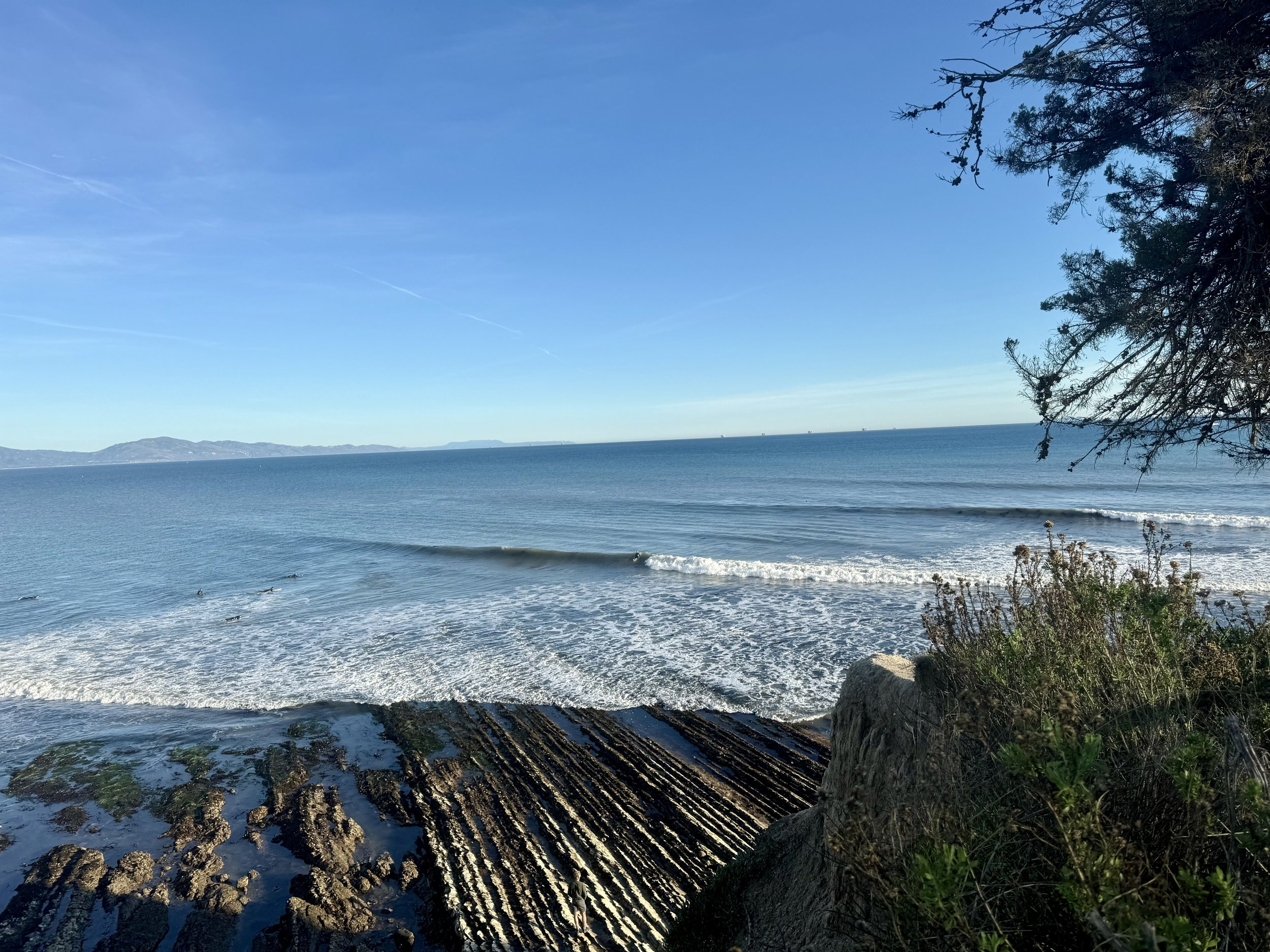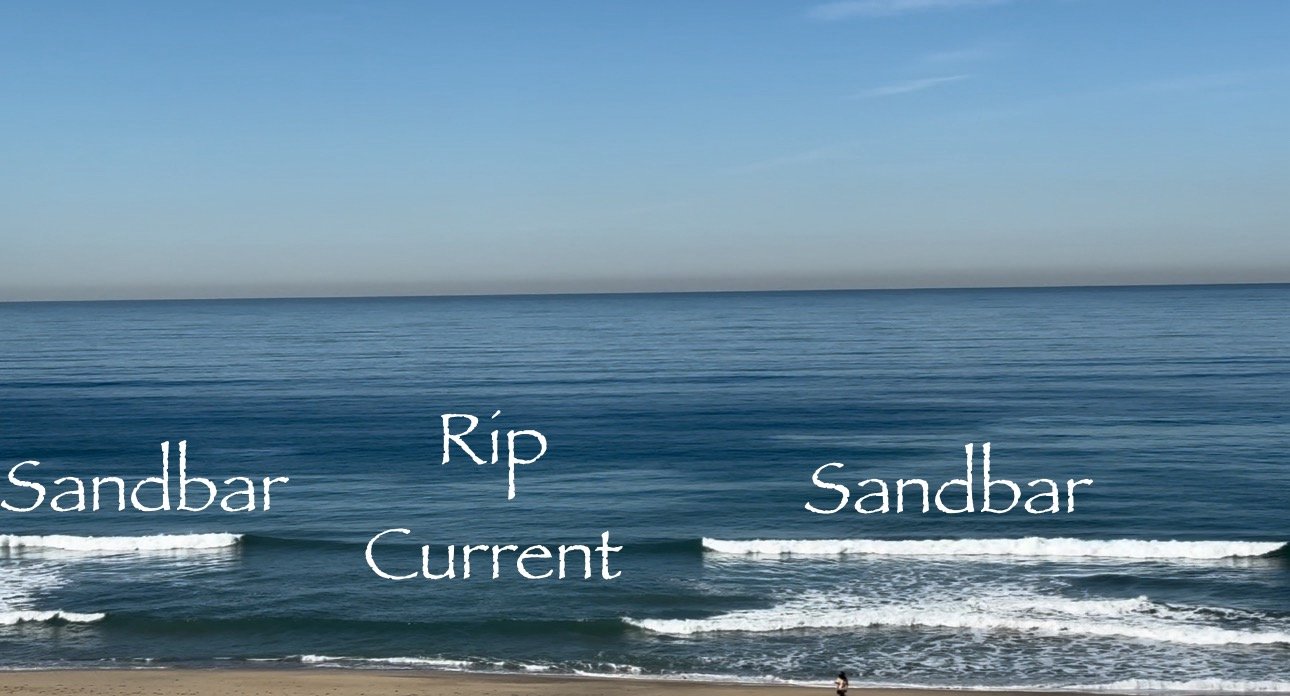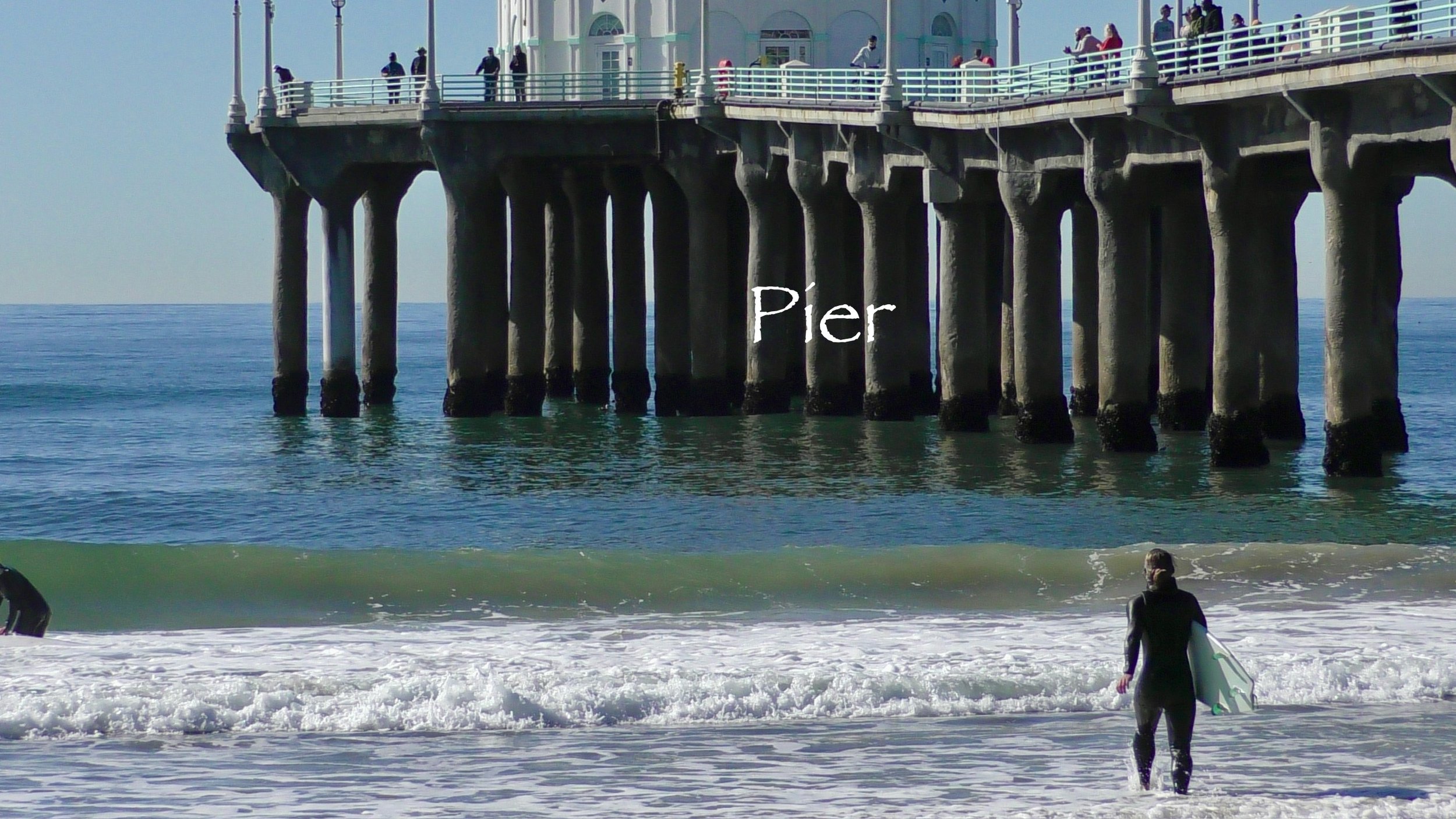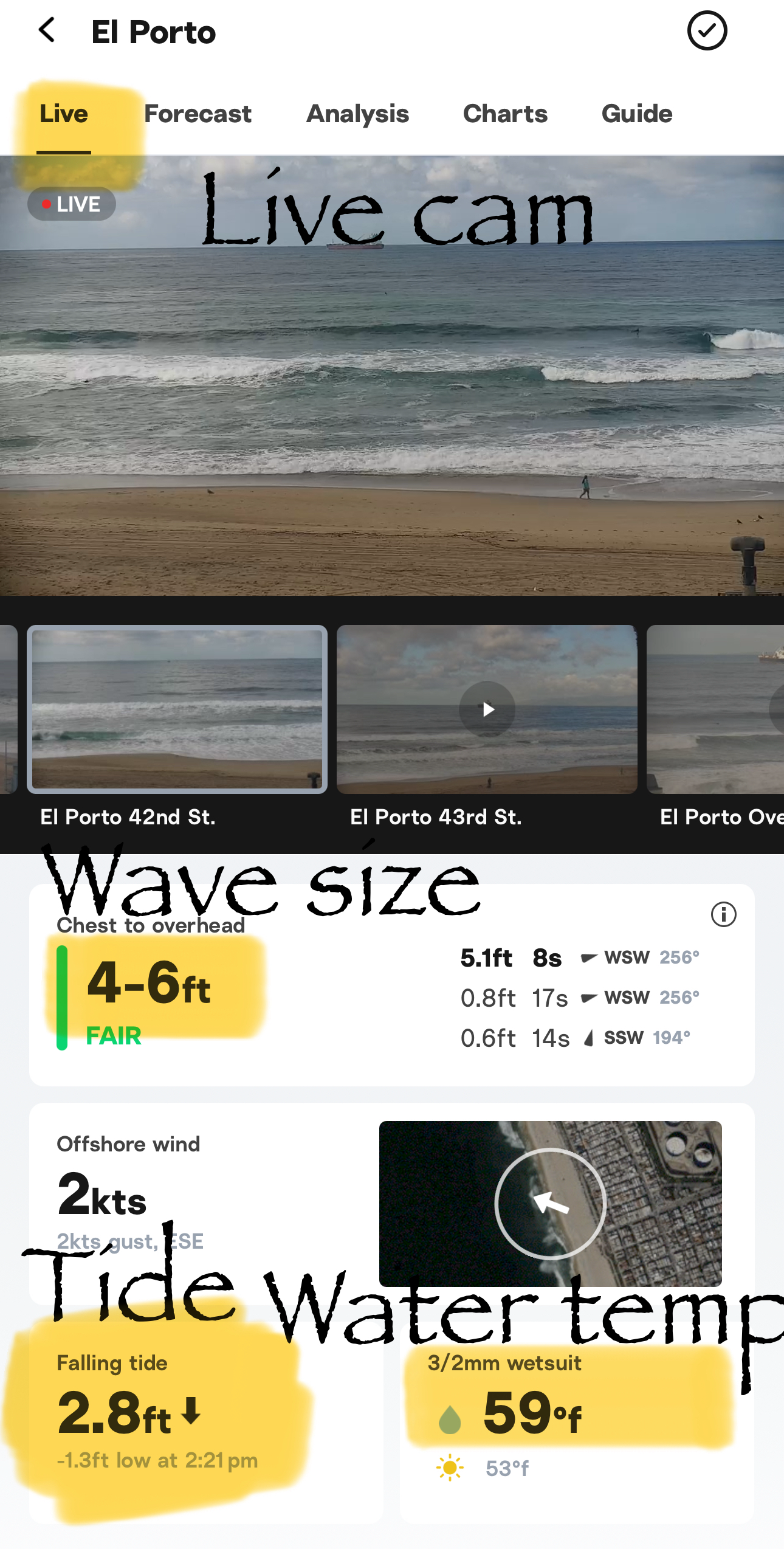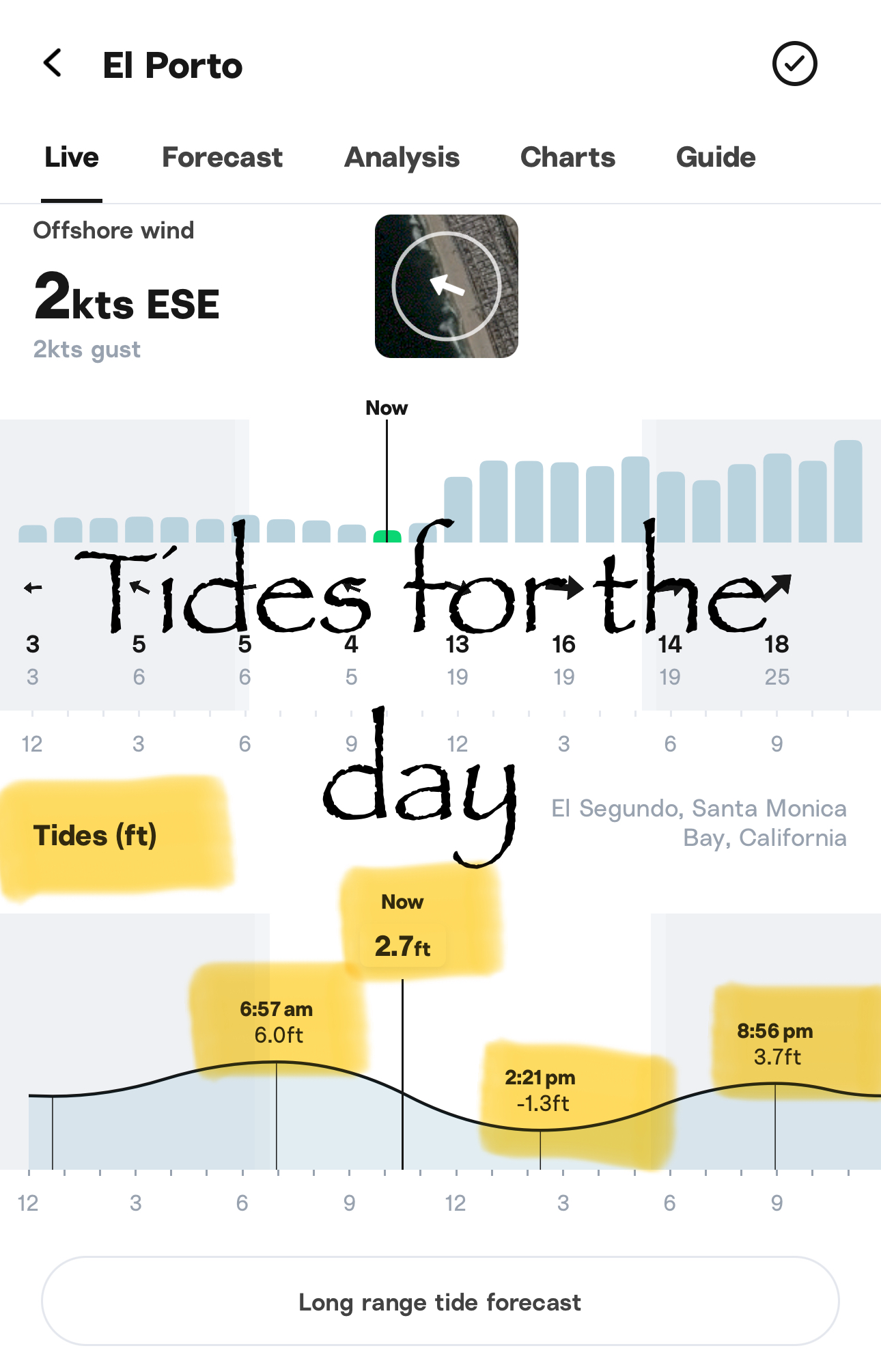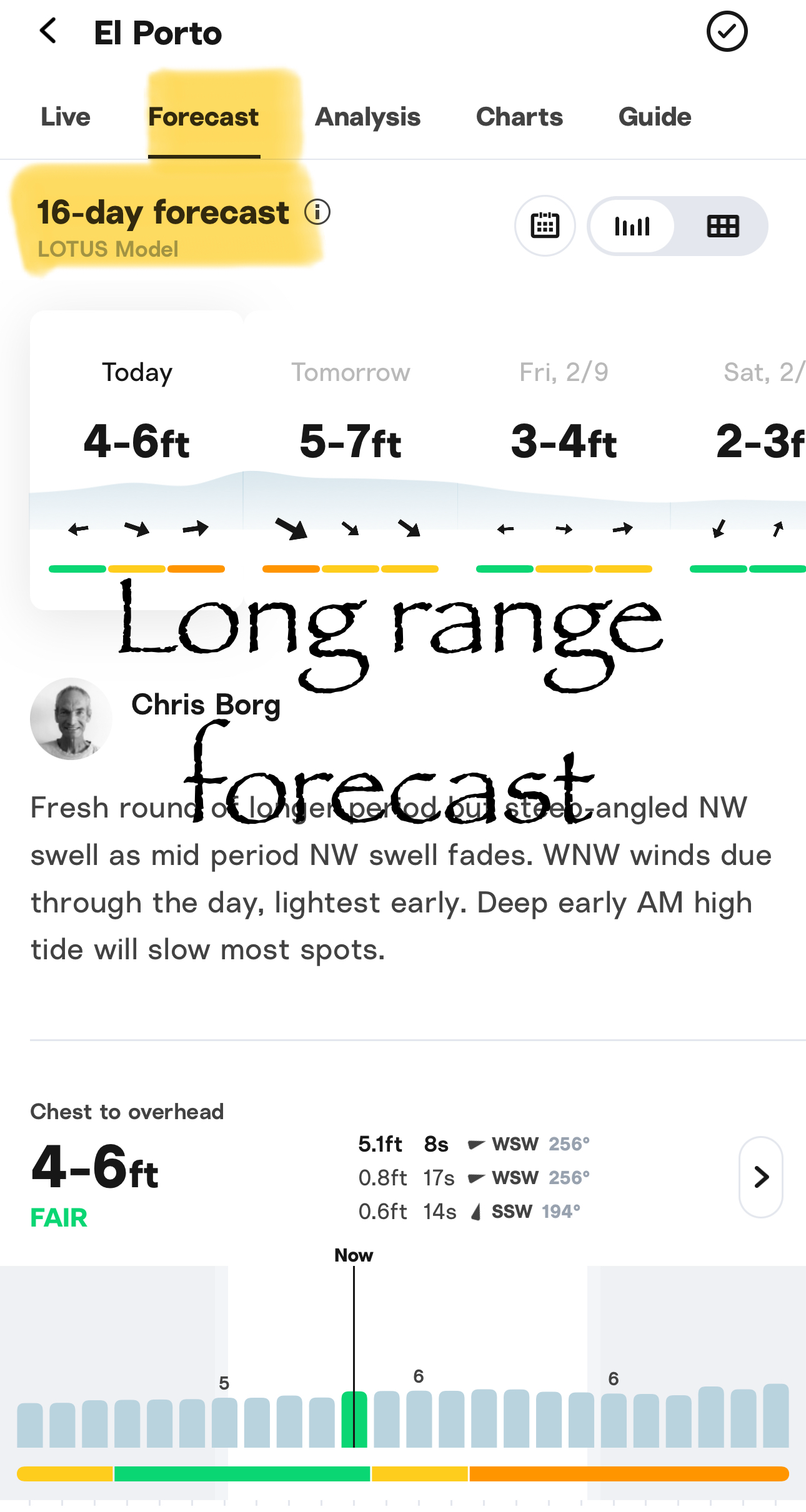Learn to Surf - Learn about the Ocean
Enviornment
Before immersing yourself in a new environment it’s a good idea to learn about it so that you can enjoy yourself and stay safe. Here is some basic terminolgy to help you understand the ocean.
Beach break - Waves that break over a sand bottom, ideal for beginner surfers as you don’t have to worry about stepping on or hitting rocks. Beach breaks can shift and change as the sand bottom contour is influenced and changed by waves. Surfing beach breaks can make you a more well rounded and adaptable surfer as you have to adapt to the changing environment.
*Tip: Here in Los Angeles we have many sandy beaches which are ideal for learning to surf!
Reef break - Waves that break over a solid piece or pieces of rock, ideal for intermediate and advanced surfers. Reef breaks have consistently shaped waves as the bottom contour doesn’t change. Can be good for barrel riding and practicing surfing maneuvers.
Point break - Waves that break along a tapering extension of land (peninsula, headland or cape), ideal for intermediate and advanced surfers. Point breaks can offer the longest rides which can allow for many maneuvers and or long barrel rides, or a combination of both! Point breaks can have a reef, rock, sand or a combination of all three as a bottom contour.
Swell - A ridge of moving energy in the ocean’s surface that is caused by wind or an earthquake, the wave energy before it hits a shallow enough depth to become a breaking wave. The further swells get from the wind source the smoother and more evenly spaced they become.
Wind swell - Waves caused by high winds close to shore over an extended period of time. Wind swell waves are very consistent and tend to have steeper wave faces.
*Safety tip: Windswell waves can be exhausting if you are not paddle fit, best for intermediate and advanced surfers.
Ground swell - Waves caused by a wind source further away from shore. Ground swell waves are more groomed and organized and typically less consistent than wind swell.
*Tip: Ground swell waves are easier to see and track if you are just learning how to surf unbroken waves.
Long period ground swell - Waves caused by a very powerful and long lasting storm system further from shore. Long period swells usually fill in gradually and pulse strong for several days then decrease gradually.
*Safety Tip: Long period swells typically produce bigger and more powerful waves which can also create strong rip and side shore currents, best for intermediate and advanced surfers.
Wave - A ridge or swell of energized water that rises then lunges forward and down, the bigger the wave the faster and more powerful the momentum. Best for beginner/intermediate, intermediate, and advanced surfers as timing is important to avoid nosediving (when the nose of the surfboard digs into the water). Waves get disorganized and more challenging to read with onshore wind.
Impact zone - Where the wave transitions to whitewater, full force of the wave. Once the wave does its initial break, it’s immediately about 50% less powerful and continues to get gentler until the wave’s energy completely dies out.
Whitewater - Wave after it has broken, ideal for beginners as it only pushes forward (not forward and down) which allows you to take your time standing. The whitewater is more turbulent (literally pockets of air and water) so I recommend doing a couple extra paddles once you feel the board engage on the wave to absorb the turbulence and make it easier to stand. Whitewater typically does not get affected by wind.
*Tip: If you want less intensity catch the whitewater further away (closer to shore) from where the wave breaks, if you want more intensity catch the whitewater closer to where the wave breaks. If you are getting worked, you may be catching the wave too close to the impact zone.
Onshore wind - Wind blowing from the ocean onto the shore, this wind makes the ocean surface disorganized and makes waves more challenging to read. Typically doesn’t affect whitewater.
Offshore wind - Wind blowing from the shore onto the ocean surface, this wind can groom the waves and slow them down making the shape better and barrels more makable. Too much offshore wind can make it difficult to see when taking off on waves and even prevent you from being able to get into the wave.
Sandbar - A shallow point in the sand that allows the wave to break a distance from the shore.
Bathymetry (ocean floor outline or contour) - Refers to the depths and shapes of the underwater terrain. The depth of water can effect your ability to walk out to a break, if the water becomes deeper than chest deep you will have to paddle which can be more tiring. The bathymetry also affects what the wave does, if it hits a shallow spot it speeds up and if it hits a deep spot it slows down.
Rip Current - A flow of water that pulls directly away from shore. Rip currents form where there is a hole or trench in the sandy ocean floor. Waves break on the shallow sandbars causing energized water to rush towards shore, then all that energized water gets pulled into the hole or trench and directed back out to deeper water. A well formed rip current looks like a river flowing away from shore, the ocean surface is disorganized and textured as opposed to smooth. The width of the rip current depends on the width of the hole or trench in the ocean floor. The strength of the rip current depends on the size of the waves, the bigger the waves the stronger the currents. Rip currents only travel as far from shore as the furthest breaking wave on any given day, the rip current loses all its momentum once it hits the deeper water. Waves typically will not break in a well formed rip as the water will be too deep.
*Safety Tip: If you get caught in a rip current you have two options, get out of the rip straight away by swimming or paddling parallel to shore (cross the river) or ride the rip out (remember waves typically will not break in a well formed rip) until it stops just past the furthest breaking wave then swim or paddle down the beach to a sandbar and make your way in. Rips can be useful for intermediate and advanced surfers to get out on consistent days, jump in the rip and use it like an escalator to shuttle you out without having to go under a single wave!
Side shore current - A flow of water pulling along the shoreline, the direction of the side shore current is dictated by the dominant swell. Example: If the dominant swell is a North West swell, the side shore current will flow South. Often if there is a strong side shore current it can be more productive after ride to walk back to the sand bar on land as opposed to walking or paddling back in the water as there is significantly less resistance and you will save your paddle strength.
*Tip: Be sure to give yourself some space to drift if you are surfing near a structure (piers and jetties) in case there is a strong side shore current you will have time to recognize it and avoid getting pulled into the structure. If you are not able to avoid getting pulled into a pier, face it and swim or paddle through it. A jetty will have a rip current next to it so if you can’t avoid being pulled toward it, go with the current and then ride the rip current out (away from shore) until it stops.
*Intermediate surfer tip: There are often great rip currents next to structures (piers and jetties) that you can use to easily get out to the lineup typically best at medium and higher tides.
Jetty - A man-made structure that is built to stretch from land out into the water, jetties are often a protective barrier against beach erosion and can be used as docks for boats.
Pier - A platform supported by pillars that extends from land into a body of water, can be used for recreation or to moor boats or ships.
Surf report - Refers to current wave size (height of wave from the surface of the ocean to the top of the wave energy) and conditions (windy/choppy ocean surface, not windy/glassy or smooth ocean surface).
Surf Forecast - Longer range prediction of wave size based on current storm models.
Tide - Refers to the depth of the water from the shallower point in the bottom contour (sandbar) to surface of the water. This is not a perfect equation as the variables (sand shifts, different swell directions) change. The tides are influenced by the gravitational pull of the moon, during the new and full moons we have bigger tide swings.
*Tip: For whitewater surfing look for a lower tide, for unbroken waves typically look for a low/medium or medium tide for best shape depending on your ideal wave size.
*Tip: On Surfline in the tide section, click on any part of the graph to see the tide at that specific time, the tide doesn't always rise and drop at the same rate.
Surfline - Surfline remains my favorite resource for current and long range surf conditions. It’s well worth the $100yr subscription. It’s most helpful for its surf cams (live feed), long range forecast and water temp info. Often it seems the surf report is based off of swell models and not actual human eyes looking at conditions, the report can be inaccurate. Best to look at the surf cam and make your own assessment of the wave size and consistency. The surf forecast can be very helpful in planning your surf session, if you have to choose one day this will help you choose the best day for your skill level. Here in Los Angeles we are situated on Santa Monica Bay which is great because we have a shoreline that faces many different directions and can give you a range of wave sizes and wind exposures, you can travel a short distance and get more or less exposure depending on what you want. By looking at the Surfline cams you can see different spots along the bay and find the best spot for your skill level on any given day. Please note: You will have to select spots to add to your Home screen, Surfline has a map with all the spots to help you.
*Tip: See images below for help reading basic info on Surfline, more on reading Surfline to come. Photo credits: Surfline
Please look for our future blogs to get more info and tips and schedule a lesson with Us if you need help! Aloha, Heather

